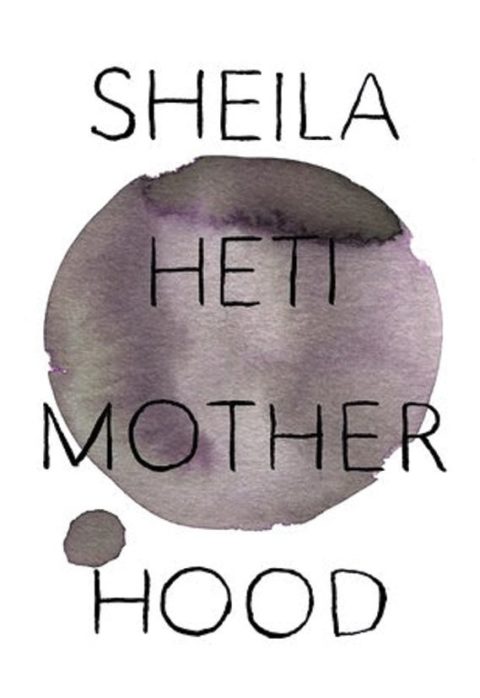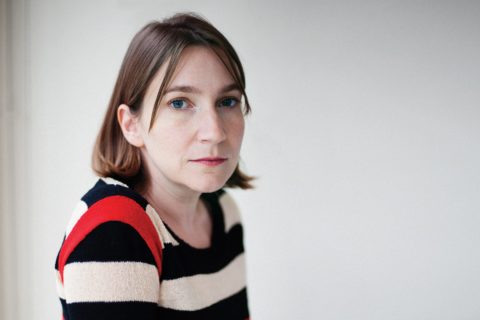Sheila Heti’s Motherhood Asks the Uncomfortable Questions About Being a Parent
"I think that so many people who have children seem to want other people to have children in order to make their choice feel more essential, more inevitable and just more right."
A young family is bivouacking at the table across from me at this Cuban sandwich spot in Toronto’s west side. It’s the familiar flurry of winter coats and diaper bags and awkward stroller manoeuvring that accompanies all parents who dare to eat out despite having a baby. They aren’t especially loud or disruptive; all the adjusting and nesting and near-constant problem-solving is just normal life for parents. There’s a term for what is happening here: “synchronicity,” maybe, or “confirmation bias,” or “Baader-Meinhof phenomenon”—which is that thing where you learn a word or a concept or about a thing and then it starts popping up all over the place. The family across the aisle wouldn’t be noteworthy at all, really, if babies weren’t on my mind. And they’re on my mind because I’m waiting to have lunch with Sheila Heti, the CanLit It girl (if that’s possible), about her forthcoming novel, Motherhood.
But the subject of her book, which is a kind of internal deliberation on whether a particular woman—who happens to share a few striking biographical details with Heti—should choose to have a child or not, isn’t the only reason I notice the young family. It’s how the novel displays Heti’s way of thinking, how it jumps from one theory or epiphany to the next, like the diary of a young philosopher, and how she spins meaning out of random chance and stray observations. Motherhood hasn’t just made me think about babies; it has made me think about thinking about babies. And with me in that state, new parents walking in right before Heti does seems significant.
Heti’s last novel, How Should a Person Be?, came out in Canada in 2010 to tepid reviews before becoming something of a hit, Barenaked Ladies-style, when it was published in the United States two years later. The way that novel mixed memoir, fiction and actual emails and recorded conversations between Heti and her friends to paint a picture of messy, entitled art kids archly enamoured by their own idealism and cleverness earned it comparisons to Lena Dunham’s Girls. It connected with an almost-lost mid-aughts generation while simultaneously prompting a backlash among critics and readers who seemed to confuse Heti with the deeply imperfect character she wrote about. The confusion is understandable. When an author captures a generation so completely, it’s hard not to assume they are writing solely from experience—not to mention that the main character of How Should a Person Be? is a struggling writer named Sheila. And while Motherhood has a different, more sincere tone, it, too, mixes fact and fiction in ways that will make it difficult for people not to assume the same thing.

“It’s sort of inevitable; I can’t really be upset about it,” says Heti after we order our sandwiches. “But it’s a very prurient way of reading a book. What difference does it make how much it’s like the author? It’s not like the author is in your life, you know? But there is still this desire to know what is and isn’t true. I obviously got that with the last book, and I’m sure I’m going to get that with this book.”
It’s hard to imagine that these unavoidable comparisons won’t fuel a similar backlash among certain critics and Internet snark mongers. While Heti explores lofty subjects like art and morality and authenticity in How Should a Person Be?, Motherhood, among other things, attempts to weigh the value of having children against, well, not. She asks some uncomfortable questions about the value and meaning of a human life. This isn’t a book that asks if women can “have it all” so much as it wonders what should be included in that “all.” Motherhood isn’t prescriptive—it is very clearly only one woman’s journey toward a decision—but parents can be sensitive about someone who is seemingly questioning their value, especially when that someone doesn’t have children herself.
“I think that so many people who have children seem to want other people to have children in order to make their choice feel more essential, more inevitable and just more right.”
“We’re such social creatures—we look to others to know whether what we’re doing is OK,” says Heti. “I think that so many people who have children seem to want other people to have children in order to make their choice feel more essential, more inevitable and just more right.” But, lest that sound defensive or critical, she goes on: “Similarly, if you don’t have kids, you kind of want your friends not to have kids. That’s partly just that you want the pleasure of the life you’ve had with them so far to continue.”
The fact that Heti herself doesn’t have kids shouldn’t disqualify her from talking about having them. In fact, the opposite is true. “The book isn’t about the pressure to have children so much as it is about ambivalence around having children: about both wanting to have children and wanting not to have children and how to best resolve these seemingly unresolvable and seemingly opposite desires,” she explains. “I think this feeling is not uncommon. It is also very confusing when you see so many women around you who are all so different from one another—with different lives and different aspirations and resources—yet so many seem to come to the same conclusion by having children.”
“It is also very confusing when you see so many women around you who are all so different from one another—with different lives and different aspirations and resources—yet so many seem to come to the same conclusion by having children.”
The important thing—what is essentially the plot of this novel of ideas—is the thinking. “There’s not a lot of space given to real existential questions—which there should be, because you’re talking about making a life or not,” she says. “I would like people to take away some liberty to entertain this question in a freer way. To add something to the world should be the question, not not adding something to the world.”
I ask, partly because it seems to be implied in the book and partly because it seems to be a clever question, if she considers her books (she has written eight, including a collection of interviews about fashion called Women in Clothes) as her children. Like progeny, they are what will be left after she’s gone—her creations that carry parts of herself into the future. “No,” she says matter-of-factly but not unkindly. “I don’t think that analogy works. Unless you say it’s something you put a lot of care into, but that’s the case with a house if you’re an architect. That’s not the same as a child. The child grows itself. You have to help it, but whatever parent it had, the child would probably more or less turn out the same way. Maybe a little happier or a little more fucked up, but basically the same.”
She first started jotting down ideas that would make their way into this book almost 10 years ago. She’s had a long time to think about which analogies work and which don’t. Still, batting ideas back and forth with her feels exciting. There’s an energy to her thinking, a commitment to honesty, that charges conversations. It’s no wonder she used real conversations in How Should a Person Be? Even in Motherhood—which, despite the odd cameo of friends and lovers, is more of a one-sided discussion—the way she picks up notions and arguments, examines them, taps them and tests them before accepting or rejecting them is alive.
Which is briefly where our conversation goes: how we came to be alive—whether there is some objective, inevitable “you” that would exist even if, say, your parents had conceived you a week later than they actually had. “You wouldn’t exist,” she says. “You won the cosmic lottery. You are here, and it’s the least likely thing. It’s so weird how our existence hinges on just absolute crazy chance, but it feels so essential. It’s like, ‘Nothing would be here if you weren’t here’ because you are the centre of your universe.”
“You won the cosmic lottery. You are here, and it’s the least likely thing. It’s so weird how our existence hinges on just absolute crazy chance, but it feels so essential.”
It’s talk that borders on the stoned epiphanies of university students, sure. But there was a reason those conversations felt so vital back then. The thinking on display in Motherhood may feel off-the-cuff, but it’s not. “Sheila works out what she wants to say through writing,” says Lynn Henry, Heti’s editor at Knopf Canada, who also helped edit How Should a Person Be?, but, she says, “while it seems like a diary, it’s very constructed. The placement of every piece and chapter is considered.”
Heti just makes thinking, and writing about thinking, look too easy—like a stunt driver safely driving out of control. Making art is deliberate; crafting an identity is, too. In a way, it’s a little like parenting. Only she’s creating herself.








